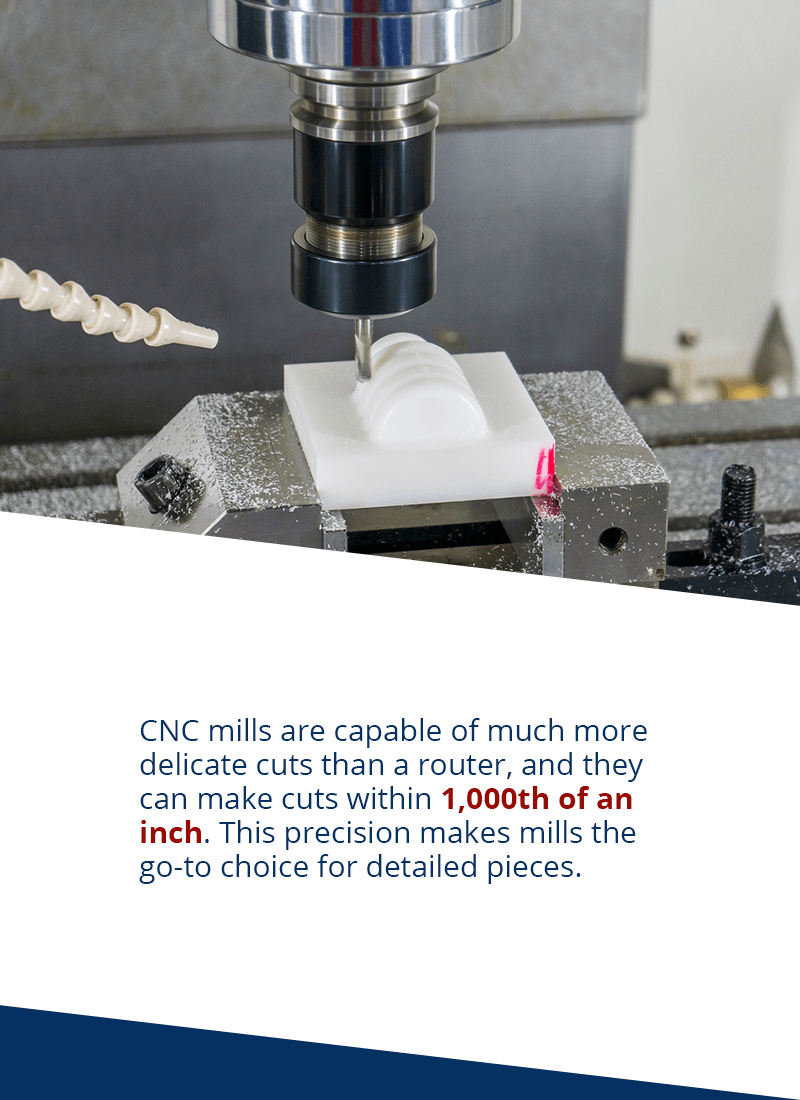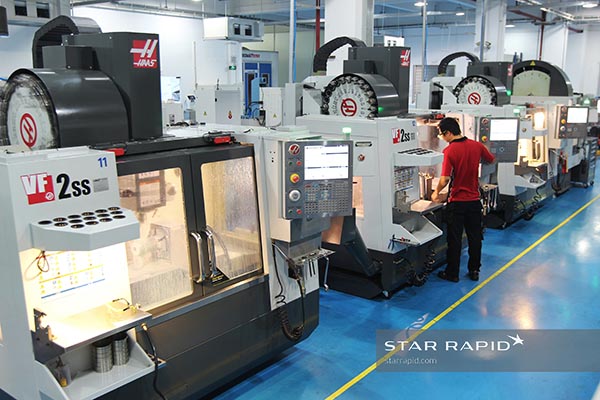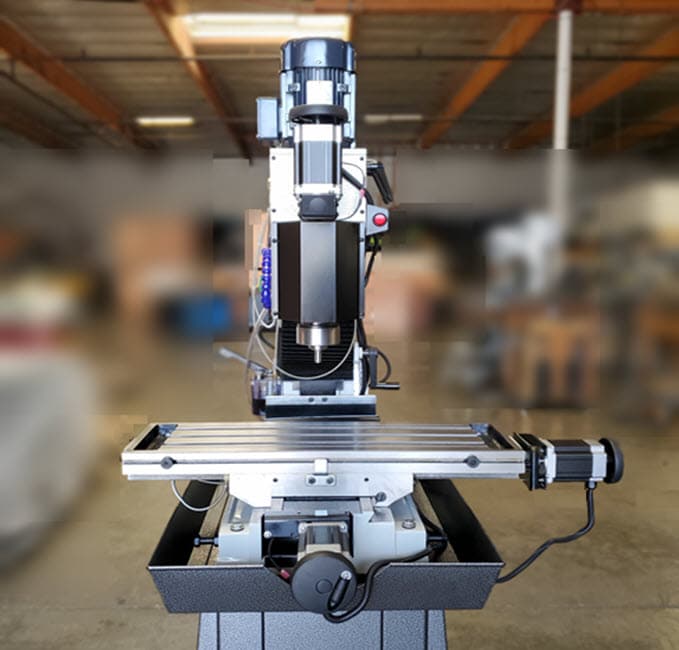Table of Contents
CNC (Computer Numerical Control) mills have revolutionized the manufacturing industry, allowing for precise and efficient production of parts and components. But just how accurate are these machines? With a high level of precision and repeatability, CNC mills are capable of producing parts with incredibly tight tolerances. However, there are several factors that can affect the accuracy of a CNC mill, including machine calibration, cutting tool selection, and material properties. In this article, we’ll explore the factors that contribute to CNC mill accuracy and the steps that can be taken to ensure consistent and reliable results.
A CNC mill is highly accurate, with precision ranging from 0.001mm to 0.005mm. Its accuracy depends on various factors such as the quality of the machine, cutting tools, and the operator’s skill. The machine’s rigidity, spindle speed, and the movement speed of the cutting tool also affect its accuracy. Regular maintenance, calibration, and monitoring can help maintain the CNC mill’s accuracy over time.
How Accurate is a CNC Mill?
A CNC (Computer Numerical Control) mill is a machine tool that uses computer-controlled movements to remove material from a workpiece. This technology has revolutionized manufacturing, allowing for greater precision, speed, and consistency in production. However, the accuracy of a CNC mill is a critical factor in determining its quality and reliability. In this article, we will explore the accuracy of a CNC mill and what factors can affect its precision.
What is CNC Mill Accuracy?
The accuracy of a CNC mill refers to how closely the machine can reproduce a specific design without any deviation from the intended dimensions. The accuracy of a CNC mill is measured in terms of its tolerance, which is the allowable deviation from the intended dimensions. For example, if a part has a tolerance of +/- 0.001 inches, the machine must be able to produce the part within that range of accuracy.
There are several factors that can affect the accuracy of a CNC mill, including the quality of the machine’s components, the calibration of the machine, and the programming of the machine’s software. Additionally, the material being used can also impact the accuracy of the machine.
To ensure the highest level of accuracy, it is essential to use high-quality components and regularly calibrate the machine. Additionally, software programming must be carefully designed to minimize any errors and optimize the machine’s performance.
The Benefits of High Accuracy CNC Mills
High accuracy CNC mills offer several benefits over traditional machine tools. These benefits include:
– Improved Quality: High accuracy CNC mills can produce parts with greater precision and consistency, resulting in higher quality products.
– Increased Productivity: CNC mills can perform tasks much faster than traditional machine tools, resulting in increased productivity and profitability.
– Greater Flexibility: CNC mills can be programmed to produce a wide range of parts, allowing for greater flexibility in manufacturing.
– Lower Costs: CNC mills can reduce manufacturing costs by producing parts with greater efficiency and minimizing waste.
CNC Mill vs. Traditional Milling Machines
Traditional milling machines rely on manual operation and are limited in their accuracy and precision. CNC mills, on the other hand, use computer-controlled movements to achieve greater accuracy and consistency.
In addition to their higher accuracy, CNC mills are also more efficient and can produce parts much faster than traditional milling machines. This increased efficiency results in lower costs and higher productivity.
Factors Affecting CNC Mill Accuracy
Several factors can impact the accuracy of a CNC mill, including:
– Machine Calibration: Regular calibration is essential to maintain the accuracy of a CNC mill.
– Component Quality: High-quality components are essential for achieving high accuracy and precision.
– Material Properties: The properties of the material being used can affect the accuracy of the CNC mill.
– Software Programming: Careful programming of the machine’s software is essential to minimize errors and optimize performance.
– Operator Skill: The skill and experience of the operator can also impact the accuracy of the CNC mill.
Conclusion
In conclusion, the accuracy of a CNC mill is a critical factor in determining its quality and reliability. High accuracy CNC mills offer several benefits over traditional machine tools, including improved quality, increased productivity, greater flexibility, and lower costs. To achieve the highest level of accuracy, it is essential to use high-quality components, regularly calibrate the machine, carefully program the software, and ensure operator skill and experience.
Frequently Asked Questions
Here are some of the most commonly asked questions about the accuracy of CNC mills.
How accurate are CNC mills?
CNC mills are extremely accurate machines that are capable of producing parts to within a few thousandths of an inch. The accuracy of a CNC mill is determined by a variety of factors, including the quality of the machine, the precision of the cutting tools, and the skill of the operator.
In general, modern CNC mills are very accurate and can produce parts with tolerances as tight as 0.001 inches. However, the accuracy of a CNC mill can be affected by factors such as wear and tear on the machine, changes in temperature and humidity, and the quality of the materials being used.
What factors affect the accuracy of a CNC mill?
There are many factors that can affect the accuracy of a CNC mill. Some of the most important factors include the quality of the machine itself, the precision of the cutting tools, the skill of the operator, and the quality of the materials being used.
Other factors that can impact accuracy include the environment in which the machine is operating (e.g. temperature, humidity, vibrations), the age and condition of the machine, and the type of cutting process being used (e.g. milling, drilling, turning).
How can I improve the accuracy of my CNC mill?
If you’re looking to improve the accuracy of your CNC mill, there are several things you can do. One of the most important is to invest in a high-quality machine that is designed for precision work.
You can also improve accuracy by using high-quality cutting tools, properly maintaining your machine, and investing in training and education for yourself or your team. Additionally, it’s important to carefully monitor the environment in which your machine is operating, and to take steps to minimize any factors that could impact accuracy.
What are some common problems that can affect the accuracy of a CNC mill?
There are several common problems that can impact the accuracy of a CNC mill. One of the most common is wear and tear on the machine, which can cause parts to become misaligned or worn down over time.
Other issues that can impact accuracy include changes in temperature and humidity, improper maintenance of the machine or cutting tools, and incorrect programming or operation of the machine.
Are there any limitations to the accuracy of a CNC mill?
While CNC mills are incredibly accurate machines, there are some limitations to their precision. One limitation is the size and complexity of the parts being produced – larger or more complex parts may be more difficult to produce with high levels of accuracy.
Additionally, the accuracy of a CNC mill can be affected by factors such as the rigidity of the machine, the quality of the cutting tools, and the skill of the operator. However, with proper maintenance and operation, CNC mills can produce parts with tolerances as tight as 0.001 inches.
In conclusion, the accuracy of a CNC mill is highly dependent on several factors. However, with modern technology and advancements in the field, CNC mills are becoming more accurate than ever before.
Firstly, the quality of the machine itself is crucial. A well-built and maintained CNC mill will undoubtedly produce more accurate results than a low-quality and poorly maintained one. Regular calibration and maintenance are essential to ensure the machine is functioning optimally.
Secondly, the quality of the cutting tool used in the CNC mill is another critical factor. Using high-quality cutting tools with precise edges and angles will result in more precise cuts and shapes. The use of high-quality cutting tools also reduces the risk of errors and inaccuracies.
Lastly, the skill level of the operator can also play a significant role in the accuracy of a CNC mill. A skilled and experienced operator can make adjustments and changes to the machine’s settings to achieve the desired level of accuracy in the final product.
Overall, when all these factors are taken into consideration, a CNC mill can be highly accurate. However, it is crucial to invest in a high-quality machine, cutting tools, and a skilled operator to ensure the best possible accuracy.
Request a quote today!
[contact-form-7 id="1578" title="Contact form"]
Please compress the file into a ZIP or RAR file before uploading. Alternatively, send through your RFQ by email.
enquires@unitymanufacture.com





